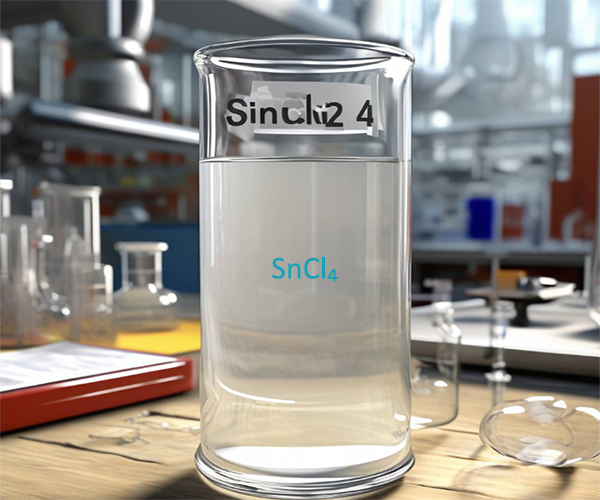Tin chloride is an inorganic compound with the chemical formula SnCl₄, also known as tin tetrachloride. It is a colorless to pale yellow liquid that produces white smoke in moist air with a pungent odor. Tin chloride is volatile at room temperature, and its vapor is corrosive and can irritate the eyes and respiratory tract.
Tin chloride is a typical Lewis acid that is able to form complexes with many metallic and non-metallic elements. It is widely used in organic synthesis as a catalyst or reaction reagent, especially in cross-coupling reactions. In addition, it has applications in metal smelting, electroplating and chemical production.
1. Catalyst for organic synthesis: Tin chloride is often used as a catalyst in organic chemistry, especially in cross-coupling reactions. These reactions are important for the synthesis of complex organic molecules.
2. Organometallic Chemistry: Tin chloride is a key reagent in organometallic chemistry for the synthesis of various tin organic compounds, which have a wide range of applications in catalysis, materials science, and drug synthesis.
3. Materials Science: Tin chloride can be used to prepare a variety of tin-based materials, including ceramics, semiconductor materials, and nanomaterials. These materials have potential applications in fields such as electronics, optics, and energy storage.
4. Electroplating: Tin chloride can be used as part of the electroplating solution to plating tinned on the surface of the metal to provide the properties of anti-corrosion and protective layer.
5. Surface treatment: Tin chloride is used to clean and activate metal surfaces, especially in the electronics industry, to clean the surface of semiconductor materials for further deposition and processing.
6. Chemical Analysis: Tin chloride is used as a reagent in analytical chemistry to detect and quantify certain anions, such as sulfate ions.
 English
English Español
Español Português
Português Français
Français Deutsch
Deutsch Русский
Русский 中文
中文 日本語
日本語
